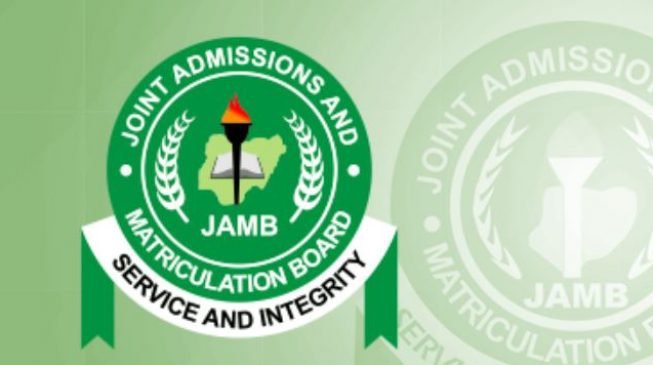JAMB (Joint Admissions and Matriculation Board) is an examination body in Nigeria that conducts the Unified Tertiary Matriculation Examination (UTME) for students seeking admission into tertiary institutions.
One of the subjects offered in JAMB is Literature in English, which tests candidates’ understanding of literary works and various literary elements.
About JAMB Literature in English Repeated Questions and Answers 2024
In this blog post, we will delve into some randomly selected JAMB Literature in English repeated questions and their corresponding answers, focusing on the different literary elements discussed.
- Limericks and Funny Poems: The first question presented a poem excerpt and asked for the poetic form. The correct answer is a limerick. A limerick is a humorous poem consisting of five lines, often characterized by a specific rhyme scheme and a witty or comical theme.
- Personification: The most common figure of speech identified in the poem excerpt was personification. Personification is a literary device that attributes human qualities or actions to inanimate objects or abstract concepts. In this case, the poet expresses dismay about bedbugs by depicting them as “awful parasites” and “sucking blood from my poor head.”
- Metaphor and Onomatopoeia: The subsequent questions touched on other figures of speech. A metaphor, as explained, is a comparison between two unrelated things that share common similarities. Onomatopoeia, on the other hand, refers to words that imitate the natural sounds of things. These figures of speech add expressiveness and interest to descriptions and engage the reader’s senses.
- Lampoon and Apostrophe: The question about lampoon provided the definition of this figure of speech, which is a form of infectious, virulent satire in verse or prose. Lampoon involves malicious or unjust attacks on individuals, institutions, or activities. Apostrophe, as highlighted, is another figure of speech represented by an exclamation such as “oh.” It is often used to address an absent person, an abstract idea, or an inanimate object.
- Farce, Oxymoron, and Onomatopoeia: The subsequent questions introduced other literary terms and genres. Farce, as mentioned, is a type of comedy that utilizes exaggerated and funny situations to entertain the audience. Oxymoron refers to the juxtaposition of contradictory words in a sentence, creating a paradoxical effect. Onomatopoeia, reiterated in another question, involves sound effects that mimic the described thing, enhancing the expressiveness of the description.
- Characterization and Allegory: The questions then shifted to elements of narrative and symbolism. Characterization, defined as the way characters are revealed to the reader, is crucial for understanding a novel’s plot and themes. Allegory, another term discussed, refers to a literary work in which characters and events are used as symbols representing abstract ideas or moral qualities.
- Drama and Caricatures: The question about drama clarified that it involves the representation of a complete series of actions through speech, movement, and gestures for the stage, screen, or radio. Caricatures, as mentioned, are exaggerated representations of individuals, often used in editorial cartoons or entertainment media.
FAQs
What type of questions are likely to be repeated in JAMB Literature in English 2024?
In JAMB Literature in English, questions from past years often focus on key themes, characters, and plot summaries of recommended texts. Common question types include:
- Analysis of characters from major works like Things Fall Apart by Chinua Achebe or The Lion and the Jewel by Wole Soyinka.
- Themes and motifs such as conflict, tradition vs modernity, and colonialism.
- Literary devices like irony, symbolism, and metaphors used in poems or drama texts. Studying past questions can help identify these recurring patterns.
How can I prepare for likely repeated questions in JAMB Literature in English 2024?
To prepare for repeated questions, focus on the following strategies:
- Study past questions from previous years to identify frequently asked topics.
- Understand the plot and character roles in the recommended texts, as these form the basis of many questions.
- Memorize key literary devices and their uses in different texts.
- Practice essay-type questions, especially those about analyzing themes or comparing characters across different works.
Can I rely solely on past questions to pass JAMB Literature in English 2024?
While studying past questions is a helpful strategy, relying solely on them may not be enough. JAMB often repeats themes or formats but can change the specific wording or focus of questions. Therefore, it’s important to have a comprehensive understanding of all recommended texts, including poems, plays, and prose. Combine past question practice with in-depth reading and analysis of the materials to ensure thorough preparation.
Conclusion
In this blog post, we explored a selection of randomly repeated questions from JAMB Literature in English exams.
By understanding and familiarizing ourselves with literary elements such as limericks, personification, metaphors, onomatopoeia, lampoons, allegory, and more, students can enhance their comprehension and analytical skills when approaching literature-based questions.
Remember, practice and thorough revision of past questions are valuable resources for success in JAMB and similar examinations.







